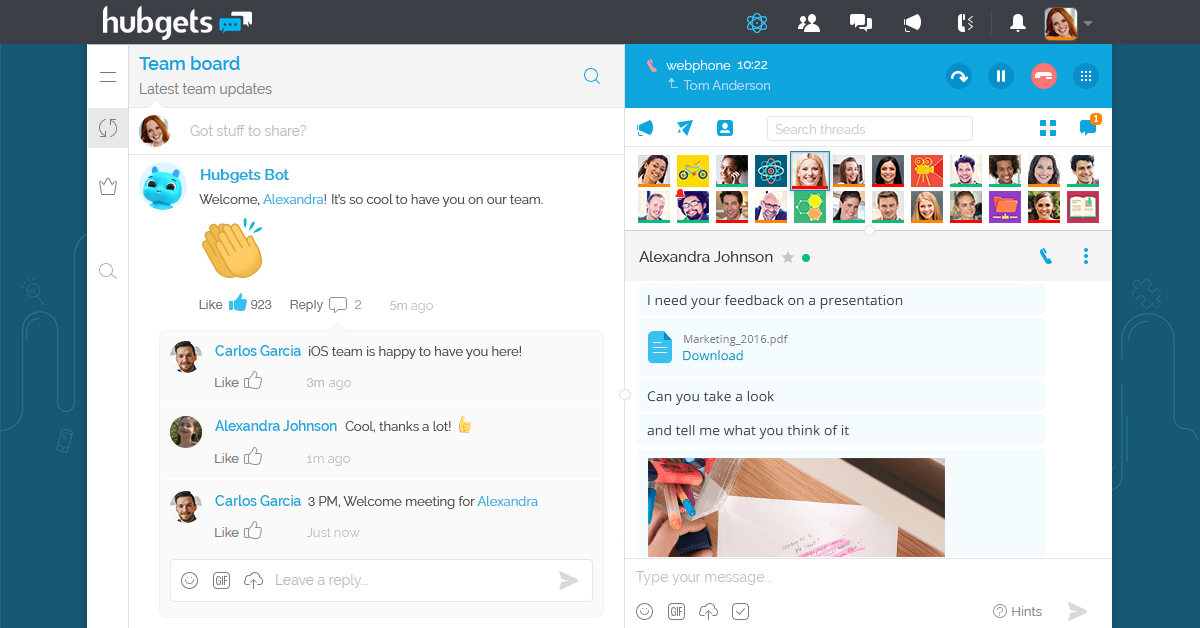This year threw the workforce for a major loop, as millions of people exchanged office cubicles for their own sofas and kitchen tables. And while this shift in daily scenery is one thing for existing employees, for new team members there’s a different story altogether. In a matter of months, remote onboarding has become an even hotter topic.

Truth or dare
While this shift to remote work came out of necessity, the data shows it could be permanent. A forecasted one in six employees will continue to work from home to some extent once the pandemic is over, reports Derek Thompson, an economics writer for The Atlantic.
In this article, we’ll play a little game of truth or dare to find the main challenges in remote onboarding and help you overcome them.
Truth: Onboarding is paramount
Let’s start with a universal truth. It’s a known fact that onboarding is a key part of the recruiting & hiring process for any business. Because one of the most common reasons many new hires quit their jobs within the first three months is due to unstructured or inefficient onboarding, suggests Adam Robinson, the CEO, and co-founder of Hireology.
And with this increase in WFH comes the challenge to design, implement and maintain an effective remote onboarding process.
If you have an influx of new team members to onboard, the action-steps outlined here can help your business overcome some of the challenges that are commonly experienced in a remote onboarding process. I now dare you 🙂
Dare: Make remote employees feel welcome
Remote work means that new hires have to find their own way as they work to understand and become part of your workplace culture. This can be detrimental to the onboarding process. In fact, in a survey of 1,100 remote employees, 52 percent reported not feeling a strong camaraderie with their onsite coworkers.
This is why it’s crucial to introduce your remote workers as valuable team members right from the start. Their first day of onboarding should be an inclusive, welcoming experience. Here are a few ways to do this:
- By using your team communication and collaboration platform, connect new employees with the entire team. For example, our team is using the Team Board available in Hubgets to introduce every new team member and get the conversation started.
- Provide new employees with access to company knowledge fast. This is an extremely important step in their induction process. It will help them learn and adapt faster to your way of work.
- Also, it’s very important to make people part of discussions and the decision process. In our company, we invite new team members to existing Topics (group chats) where they have access to all previous discussions and exchanged files. This will save their precious time from pointless meetings and they will also get a real taste of the company’s culture.
- Encourage 1-on-1 discussions so new hires can get to know their co-workers on a more personal level and share more about themselves.
If you want even more ideas to juice up this dare, read this article How to Onboard New Remote Workers and Streamline the Process.
Dare: Sustain a culture of collaboration
An introductory chat between the new and existing team members is helpful, but it cannot end there. Your entire onboarding process must be collaborative. Employees who communicate and collaborate on a regular basis are more likely to develop “a genuine sense of trust” which can increase job satisfaction and retention, suggests Chieu Cao, the co-founder of Perkbox.
To encourage this collaboration, pair each new hire with an employee to answer questions about their role, familiarize them with policies or expectations, and serve as a mentor during those first 90 days.
Also, read our recent post Keep Your Organizational Culture Alive During a Pandemic to get more suggestions for keeping company culture alive in a remote environment.
Dare: Equip workers with the tools they need
With an onsite team, it’s easy to make sure everyone has access to the right equipment, software, and technology. With a remote workforce, this can prove more challenging, yet it is just as important, if not more so.
In most cases, your new hires will have their own computers and mobile devices. As part of their onboarding, you should also furnish them with other tools they will need. In addition, it’s important to have tutorials they can watch on how to use each one, when to use them, etc.
Don’t assume that the tools you frequently use are self-explanatory or that a new employee’s home office has a quality webcam for video meetings. Ask what they need and set them up for success.
Dare: Keep new hires both motivated and engaged
For some new hires, even just the idea of an onboarding process is met with groans of boredom and monotony. Let’s face it, onboarding can be time-consuming and tedious. Keeping them engaged during the process is key to giving them a great first impression of your company and the culture.

If you want to build a system of remote onboarding that holds employees’ attention and motivates them to learn, ensure all the routine, generic procedures are taken care of before onboarding actually starts. Companies with high employee connection and engagement are 53 percent more likely to finalize all documents, contracts, handbooks and other tedious elements of the process ahead of time, Aberdeen Research has found.
To make this easy, prepare a templated onboarding packet that you send to every employee upon hiring. They can use this to tackle the tedious aspects of onboarding in the days leading up to their start date so they’re not inundated with paperwork and handbooks when they would rather dive in, meet the team, and get started.
Overcome the challenges of remote onboarding
2020 has become a year of continuous pivots across all industries. Remote onboarding is just one of the many challenges to overcome.
Whether your team will be remote indefinitely or just for the duration of this pandemic, these strategies can help take the stress, confusion, disorganization, and inefficiency out of remote onboarding.
Post A Reply